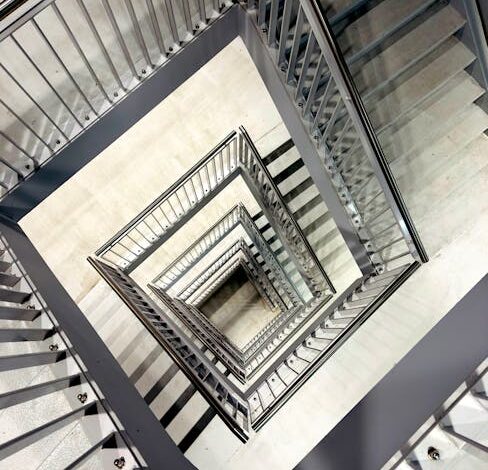The Dance of Paper and Precision: Getting Started

There’s a peculiar magic in taking a flat sheet of paper and, through a series of intentional creases and folds, coaxing it into a three-dimensional marvel. It’s not just about following instructions; it’s about understanding the paper, anticipating its bends, and witnessing geometry come alive in your hands. If you’ve ever been captivated by the intricate beauty of an origami tessellation, you know exactly what I mean. These aren’t your grandma’s paper cranes (though those are wonderful too!); we’re talking about repeating patterns that interlock seamlessly, creating stunning textural landscapes.
One such captivating design is the “Dancing Ribbons” tessellation. It’s a fantastic entry point into the world of complex paper folding, offering a rewarding challenge that culminates in a truly elegant piece of art. While the final product looks incredibly intricate, the journey to get there is a meditative process, a dialogue between your precision and the paper’s potential. Ready to embark on this journey? Let’s unfold the secrets to making your own.
The Dance of Paper and Precision: Getting Started
Before you even make your first crease, the foundation of your tessellation lies in two critical choices: your paper and your tools. Think of it as preparing a canvas for a masterpiece; the right materials make all the difference in the execution and the final aesthetic.
Choosing Your Canvas: More Than Just Paper
The “Dancing Ribbons” pattern, like many tessellations, thrives on a specific kind of paper. You’re looking for a sweet spot – something more substantial than your everyday printer paper, but not as thick or stubborn as heavy cardstock. The ideal weight allows for crisp, clean folds that hold their shape, yet remains pliable enough to fold back and forth multiple times along the same line without tearing or creasing haphazardly. My personal go-to is often a high-quality certificate paper, or something similar to Skytone, which designer Yoder often recommends.
Why is this so important? Because a good tessellation isn’t just about the visual pattern; it’s about the tactile experience. The paper needs to be crisp enough to deliver that satisfying “snap” when you shake the finished piece – a testament to its structural integrity and the precision of your folds. It’s a subtle detail, but it speaks volumes about the quality of the craft.
Tools of the Trade: Sharpening Your Approach
When it comes to cutting out your hexagon pattern, precision is paramount. While scissors can get the job done, a straightedge and a sharp blade (like an X-Acto knife or a rotary cutter) on a cutting mat will give you laser-sharp edges. This initial accuracy sets the stage for every subsequent fold, ensuring that your grid lines up perfectly. Trust me, trying to compensate for a slightly off-kilter hexagon later on is a headache you’ll want to avoid.
Another invaluable tool is a bone folder. This seemingly simple device is a game-changer for tessellations. It allows you to press your creases firmly and evenly, making them sharp and well-defined. This not only makes the paper easier to work with as you build up layers of folds but also minimizes stress on your hands, especially during longer folding sessions. A sharp crease is a happy crease, and a happy folder is a productive folder.
Building the Foundation: The Grid’s Embrace
With your precisely cut hexagon in hand, the next step is to lay down the background grid. This isn’t just busywork; these black lines are your navigational chart, your reference points for every subsequent twist and turn. The most effective way to establish this grid is methodically: first, fold the hexagon in half, edge to opposite edge, making sure your creases are perfectly aligned. Then, fold those new edges into the center to create quarter lines. Repeat this process for all three directions of the hexagon.
After each set of folds – the halves, the quarters, the eighths, and finally the sixteenths – it’s crucial to fold the new lines back the other way. This “pre-softening” of the creases makes the paper much more cooperative later on when you’re collapsing multiple folds simultaneously. Think of it as limbering up before a strenuous workout; it makes the main event smoother and less prone to strain.
Unveiling the Twists: From Foundation to Form
Now, the real fun begins: transforming that flat, gridded hexagon into a dynamic, three-dimensional tessellation. This is where the paper truly starts to dance, moving from a static plane to an interlocking relief.
The Heart of the Matter: The Central Hexagon Twist
Every “Dancing Ribbons” tessellation begins with its core, the central closed hexagon twist. You’ll work on the blank side of the paper for this. The trick here is to visualize your mountain folds (the ones that pop out towards you) and valley folds (the ones that recede) in relation to your grid lines. For this central twist, your mountain folds will run along grid lines pointing to the hexagon’s corners, while your valley folds will be one grid spacing above on the right.
The process involves setting up one pleat’s mountain and valley folds, then passing it counterclockwise into your other hand, and repeating for the next pleat. It’s a rhythm. As you work your way around, keeping the center of the paper elevated, a hexagonal tower will begin to form. Once all six pleats are folded, you’ll gently flatten this tower, working from the edges inward, until it’s about two grid spacings high. Then, the grand finale for this section: a sharp counterclockwise twist on the tower to encourage it to lie flat. Don’t worry if it doesn’t immediately comply; it rarely does. A little gentle coaxing, lifting each pleat slightly to ensure the valley folds stay on their grid lines, will help it settle into its perfectly smooth, hexagonal form.
The Supporting Cast: Triangle Twists Emerge
Once the central hexagon is established, flip your paper to the printed side. This is where the intricate interplay of off-grid creases begins. You’ll find a mountain fold of a pleat and split it into a three-way intersection of mountain folds, radiating from a point two grid spacings out from your central hexagon hole. This point is the nucleus of your closed triangle twist. To make the triangle, you’ll squash it into shape, creating those new off-grid creases as two new pleats fold over in a clockwise direction.
Squashing these triangle twists requires a delicate touch. Press gently on each of the three pleats just outside where one valley fold meets the next mountain fold. This initiates the flattening, which you can then finalize by pressing the entire triangle from the top. It’s a process that feels incredibly organic once you get the hang of it, watching the paper yield to your touch and reveal the hidden geometry.
Crucially, as you fold each of the six triangle twists, do so in a counterclockwise order around the central hexagon. This specific sequence is designed to make the subsequent overlapping of pleats far easier to manage, preventing unnecessary wrestling matches with your paper.
Connecting the Dots: The Rhombus Twists
With all your triangle twists neatly folded, you’ll notice areas where pleats from different triangles overlap. These are your next targets – the rhombus twists. The beauty of the “Dancing Ribbons” pattern is how these different elements interlock seamlessly. To fold a rhombus twist, gently open up one of these overlaps, taking care to keep your already-folded triangles intact. The printed folds will guide you in setting up the rhombus twist within this opened section.
Once all the pleats for the rhombus are in place, a gentle press from the top will flatten the twist, completing another segment of your tessellation. Repeat this for all six pleat overlaps, and you’ll find your “Dancing Ribbons” pattern truly starting to take shape, forming a continuous, flowing design across the paper.
Mastering the Flow: Tips for a Seamless Creation
Beyond the step-by-step instructions, there are nuances that elevate the folding experience from a task to an art form. These insights come from experience, from understanding how the paper interacts with your hands and the pattern.
Precreasing vs. Collapsing: Your Folding Philosophy
When you look at the crease pattern, you’ll see a choice. Do you precrease all the off-grid creases – those short segments that form the twists – and then collapse everything in one grand, satisfying movement? Or do you fold one twist at a time, meticulously setting up each fold as you go? For beginners, precreasing the triangle and rhombus twists can be incredibly helpful. It reduces the complexity of the final collapse, making the “squashing” process more intuitive and less prone to misfolds. As you gain experience, you might find the “collapse all at once” method incredibly efficient and gratifying.
Remember those faded lines inside the twists? Those are helper folds. Don’t be tempted to make them permanent; they’re just there to guide your setup, not to be part of the final, crisp pattern. Knowing which lines to emphasize and which to ignore is part of the learning curve.
The Zen of the Fold: Patience and Observation
Origami tessellations aren’t a race. They’re a form of meditative art. Take your time. Observe how the paper responds to your touch. If a fold isn’t sitting right, gently backtrack and adjust. Forcing the paper often leads to tears or unsightly creases. The goal isn’t just a completed tessellation, but a beautifully executed one.
There’s immense satisfaction in watching a complex design emerge from a simple sheet of paper, guided solely by your hands and a precise pattern. The “Dancing Ribbons” tessellation is more than just a craft project; it’s an exercise in patience, precision, and the quiet joy of creation.
Conclusion
Folding your own tessellation, especially one as elegant as “Dancing Ribbons,” is a deeply rewarding experience. It’s a tangible demonstration of how simple actions, when applied with precision and intention, can lead to extraordinary results. From selecting the right paper to patiently building the foundational grid, and then coaxing each intricate twist into being, you’re not just following instructions; you’re engaging in a dialogue with material, geometry, and your own dexterity.
The beauty of a tessellation lies not only in its final form but in the journey of its creation. It’s a reminder that even the most complex designs are built from fundamental principles and a series of careful steps. So, download that pattern, pick up your bone folder, and let your hands discover the mesmerizing dance of paper. You might just find yourself addicted to the satisfying snap of a perfectly folded tessellation.





